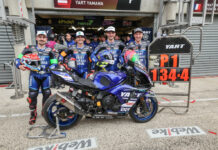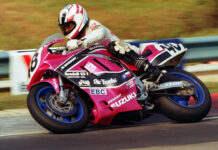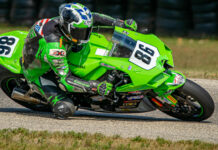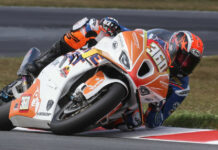Responding to complaints that the 2008 CBR1000RR as sold in Europe makes more power and revs higher than the 2008 CBR1000RR as sold in the U.S., and to conspiracy theory claims that the tuning difference is related to crankshaft failures in Europe, American Honda has issued an official statement. It is worth noting that the CBR1000RR tested on track for the June 2008 issue of Roadracing World and subsequently raced by Jeremy Toye in an AMA National at Auto Club Speedway, has suffered no mechanical or electronic issues of any type. The American Honda statement follows: Questions have been posed concerning the state of tune of the 2008 CBR1000RR, and American Honda would like to lend some insight to this issue. In today’s market, all manufacturers of every type of vehicle must comply with numerous governmental regulations from the EPA, CARB, DOT, etc., regarding emissions, sound levels, safety equipment and more. These regulations often impact machine performance, as has been the case for several decades. More specifically with the 2008 CBR1000RR, tuning specifications for this machine reflect adjustments made to meet sound-level standards established for motorcycles in the USA. In the USA, this noise-testing procedure is conducted at an engine speed equal to one-half of the rpm level at which peak horsepower is produced. Therefore, in the case of the CBR1000RR, it was necessary to adjust the engine speed at which peak power is produced in order to meet these U.S. noise requirements. Design goals for the CBR1000RR mitigated against fitting a heavier, more restrictive muffler, a second muffler, or changing the muffler location in order to pass the noise requirements; these attendant alterations did not support the development goals of mass centralization and the impact such changes would have on cornering transition. Prime importance was placed on creating a light and nimble bike, with technology to improve transitions into, through, and exiting corners. Given such choices, American Honda felt that a powerband laden with midrange as well as light machine weight and superb handling would be preferred by American riders.
American Honda Issues Statement Regarding State Of Tune Of U.S.-Market CBR1000RR
American Honda Issues Statement Regarding State Of Tune Of U.S.-Market CBR1000RR
© 2008, Roadracing World Publishing, Inc.






